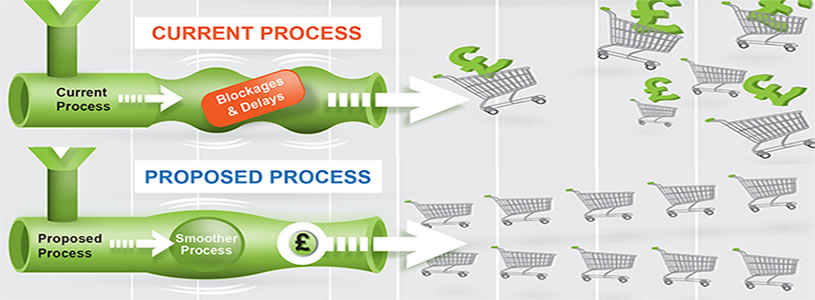We are seeing increasing scrutiny on social value questions in tenders and PQQs. Since the Public Services (Social Value) Act 2012 came into force, the public sector has had to ‘consider’ social value as part of any procurement. But recent reviews of the Act have led to a stronger requirement for public bodies to take positive action and become more accountable. As a result, the expectations for bidders to demonstrate clear and measurable impact in tenders has intensified.
Suppliers are increasingly asked to monitor their social value activity to prove the promises listed in their tender submissions come to fruition.
What is Social Value?
Social Value is the term used to describe the additional benefit created in the delivery of a service contract which has a wider community or public benefit. It extends beyond the value delivered as part of the primary contract activity and goes wider to improvements to the ‘economic, social and environmental’ well-being of the local area.
In procurement terms, it is a move away from awarding contracts based on lowest cost. Whereas evaluation criteria in the past may have been weighed 60% price and 40% quality, today we are seeing weightings of up to 20% for social value alone, so it’s a fundamental component of any successful bid.
Typical social value tender questions
Here are a range of examples of the kinds of Social Value questions which contracting authorities might ask:
Economic examples:
How will you support local people to gain access to the employment opportunities that your contract will produce?
How will you create jobs through the growth of business and investment in the local area?
What work experience will you provide and how will this be achieved?
What work place schemes and opportunities will you provide for apprenticeships, traineeships, higher apprenticeships.
What training opportunities will you offer and to whom? For example, entry-level employment, engaging the unemployed, specific priority target groups, existing workforce.
What education engagement will you offer? For example, with schools, colleges or training providers and how will this be achieved? For example, through site visits, careers talks, work placements etc.
What opportunities are there for voluntary work and what benefits will volunteers receive?
Social example questions:
How will your organisation work to help others? For example, local charities, local community groups, local resident engagement, supporting local culture and heritage.
How will your supply chain ensure ethical considerations? For example, this could include ethical sourcing practices.
How will you promote the safeguarding and welfare of children, young people and vulnerable adults?
How will you provide opportunities for all, including the most vulnerable, to make a valuable contribution and promote social integration? For example, this could include work opportunities for disadvantaged people.
How will you consider equality and diversity in the provision and operation of services? For example, this could include ensuring the workforce is representative of the communities served as part of this contract.
How will you protect and support the most vulnerable people?
How will you work towards improving the health and wellbeing of local residents and employees?
Environmental examples:
What are the main environmental impacts associated with delivering the contract outputs and how will impacts be reduced, managed and verified?
Have you set any specific environmental objectives to improve environmental performance during the duration of the contract? If so, what are they and how will environmental objectives be managed and verified?
How will you reduce energy and fuel consumption in the provision of the contract?
How will you promote initiatives which retain, protect, enhance and/or promote the character of the local natural environment for the benefit of local people and wildlife?
Please confirm what will be delivered, as part of contract delivery, in relation to any of the following and how this will be achieved: the re-use of resources, increasing recycling levels to reduce the amount of waste, use of environmentally friendly goods, reducing the carbon footprint, pollution reduction, improving fuel and energy efficiencies.
Will you operate an environmental management system certificated to ISO 14001 or equivalent throughout the period of the contract?
Creating Social Value Responses
Responses to social value questions can vary considerably as they will be based on the specific needs of a local area. The scope of each contract and buyer expectations will also differ widely so its important to read the questions carefully and respond specifically to each element of the contract.
It’s important to familiarise yourself with local social value priorities to ensure that your commitments and responses reflect them. Never make the same standard commitments to every bid response, as each commissioning authority will have its own unique socio-economic challenges which they will be looking for you to address:
Below are some general pointers:
Your ‘economic’ responses might include:
- Creating jobs for local people
- Progressing towards paying a living wage
- Supporting young people into apprenticeships
- Using local suppliers and supporting a local supply chain
- Investing in local SME businesses
- Providing training or apprenticeship schemes
- Promoting opportunities to work with local voluntary and community organisations
Your ‘social’ responses might include:
- Improving the health and wellbeing of local residents and employees
- Helping local charities and community groups
- Championing ethical supply e.g. Fair Trade
- Promoting social integration and community engagement e.g. involving local residents
- Supporting local culture and heritage
- Creating volunteering opportunities
- Promoting safeguarding and the welfare of children, young people and vulnerable adults
Your ‘environmental’ responses might include:
- Reducing energy and fuel consumption in the provision of the contract
- Minimising waste through re-use and recycling
- Using environmentally friendly goods to minimise pollution
- Saving energy e.g. using energy efficient lighting and equipment
- Promoting initiatives which retain, protect or enhance the local natural environment
- Incorporating sustainability considerations into your supply chain
- Implementing ISO 14001 environmental management systems
Resources for Calculating Social Value
Often your social value bid response will require some form of measurable return on investment calculation.
Many contracting authorities now have a social value toolkit, which is designed to help suppliers understand and deliver localised social value. These toolkits include ideas for the type of social value you might offer, potential partners and how you can calculate this for a winning tender response.
There are several free to download Social Value Calculators as well as paid for social value tools on the market. We’ve listed a few free resources below to help you:
Housing Associations’ Charitable Trust (HACT) operate a spreadsheet tool where you can input specific information and generate an assessment of the social value delivered through your bid proposals. The calculation will arrive at a ratio of how many pounds you will generate in social value, for money gained through the contract. https://www.hact.org.uk/value-calculator
The Sustainable Development Unit (SDU) offer a similar free to download calculator here:
https://www.sduhealth.org.uk/areas-of-focus/social-value/social-value-calculator.aspx
Business In The Community have compiled a detailed toolkit on Social Impact Measurement & Metrics which can be downloaded here https://www.bitc.org.uk/resources-training/toolkits/social-impact-measurement-metrics
The Considerate Constructors Scheme have a range of useful information on their Building Social Value website. http://buildingsocialvalue.org.uk/
If you need more support to create a winning social value bid response, please contact our bid response team on 01462 440077 or email Stuart@propeller-studios.co.uk








 Illustrative graphics These are a very visual way to show the different component parts of a project
Illustrative graphics These are a very visual way to show the different component parts of a project  Linked graphics These can identify the different departments in a chain and where there may be weaknesses in the process.
Linked graphics These can identify the different departments in a chain and where there may be weaknesses in the process.  Flow diagrams These show the different stages in a process and highlight areas of difficulty or that need more attention.
Flow diagrams These show the different stages in a process and highlight areas of difficulty or that need more attention.  Maps These demonstrate the geographical locations involved.
Maps These demonstrate the geographical locations involved.  At Propeller, we specialise in visual communication for pre-qualification and tender submissions – combining images, words, and ideas to convey information to an audience to produce a specific result – creating a winning bid. We can provide you with infographics to insert into your submission, or produce the entire bid. If you would like to see how varied infographics can be, the website
At Propeller, we specialise in visual communication for pre-qualification and tender submissions – combining images, words, and ideas to convey information to an audience to produce a specific result – creating a winning bid. We can provide you with infographics to insert into your submission, or produce the entire bid. If you would like to see how varied infographics can be, the website 
